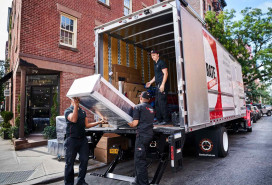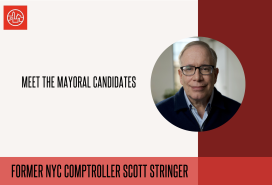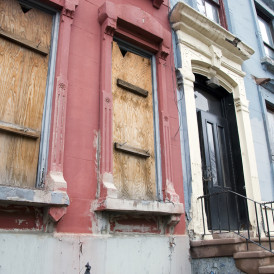What is a CEMA loan, and how can it reduce my mortgage recording tax?
- A consolidation, extension, and modification agreement is only available to NYC condo and townhouse owners
- It involves assigning a mortgage so you avoid paying the full mortgage recording tax on your home loan

The savings associated with a CEMA loan can be considerable.
iStock
A consolidation, extension, and modification agreement or CEMA is a loan only available to New Yorkers. The most common CEMA is offered to those who are refinancing their mortgage. In some unique cases, it is also available to buyers.
Why do owners and buyers use a CEMA? This maneuver can help you avoid paying the entire mortgage recording tax on a home loan. It involves assigning a mortgage from one lender to another, so your tax is only calculated on the unpaid principal. The savings can be considerable.
"If you pay off one mortgage and take out another, you have to pay the tax on the face amount of each mortgage. When refinancing with a CEMA loan, you take the existing mortgage, consolidate it with the new one, and pay the tax on the gap between the two," said Miguel Lopez, an attorney who works with National Cooperative Bank.
[Editor's note: A previous version of this post was published in April 2024. We are presenting it again with updated information for March 2025.]
For example, if you have a principal balance of $100,000 on your mortgage and then refinance with a new lender for a mortgage of $200,000, you will only have to pay a mortgage recording tax on the $100,000 difference rather than the full $200,000.
This loan type is unavailable to co-op buyers because mortgage recording tax is paid on real property, e.g., a condo or townhouse, but not a co-op.
In NYC, the mortgage recording tax rate is 1.8 percent for mortgages under $500,000 (and 1.925 percent for those over $500,000), so with a CEMA, in the example above, you would pay a tax of $1,800 instead of $3,600.
"We do it every time we can," said Melissa Cohn, regional vice president at William Raveis Mortgage. "The mortgage recording tax in New York is expensive, and you want to do everything you can not to pay it again."
| What are CEMA loans and when they make sense | |
|---|---|
| How they work |
|
| When they are available |
|
| Other considerations |
|
Potential costs of CEMA loans
A CEMA loan does have its own expenses. If you refinance with your current lender, the process is easier because there's no need to get approval for reassigning the loan. However, if you switch banks, your first lender has to approve assigning your mortgage to the new one, which can trigger fees. You'll need to figure out if it's worth it to incur the additional expense.
According to Cohn, banks may charge anywhere from $500 to $1,000, or a percentage of the loan amount.
"It's at the discretion of the bank, so the CEMA makes sense when the cost of doing it is significantly less than the cost of paying the mortgage recording tax," she said.
There may be other complications if you're refinancing from one bank to another. Some banks will not provide CEMA loans when refinancing with an outside bank, Cohn added. CEMAs can also take a long time to be approved—from six weeks to six months. Another potential issue might arise if the chain of title is incomplete.
"You can't ensure that the bank that holds the mortgage has retained all the copies and proper forms," she said. "Far too often we don't get them—documents get lost, and without a complete, unbroken chain, you can't do a CEMA."
A purchase or 'splitter' CEMA
The other type of CEMA—called a purchase CEMA or "splitter"—involves consolidating two or more loans into one as part of a sale. A seller who is still paying off the mortgage can transfer it to a buyer who needs financing. In a situation like this, the buyer will only have to pay the mortgage recording tax on the new mortgage amount, minus the seller's remaining loan balance. In turn, the seller saves money on the transfer taxes, paying taxes on the sales price of the home minus the remaining mortgage debt transferred to the buyer.
Keep in mind that a purchase CEMA, or mortgage assignment, is different from a mortgage assumption. An assignment allows you to take on someone else's mortgage and negotiate your own rate and terms, versus a mortgage assumption where you take on a mortgage exactly as it was for the original borrower, with the same rate and terms.
Still, CEMA loans aren't common for buyers.
"The purchaser takes on the seller's current obligation, but the seller is technically still liable on that note," Lopez said. "At some point, a bank technically could come and collect on that note. It's very rare that two banks agree to do a purchase CEMA."
Purchase CEMAs may become more common in the future if interest rates start to climb, according to Lopez. "If we get to a point where there is a 12 percent rate on mortgages, and sellers have a 3.75 percent rate, we could see an uprise as the savings outweigh the potential risk," he said.
—Earlier versions of this article contained reporting and writing by Alanna Schubach.
























